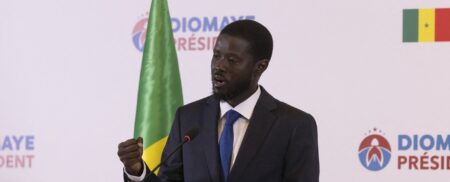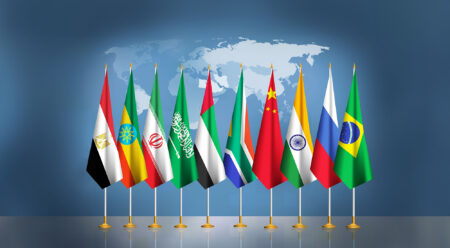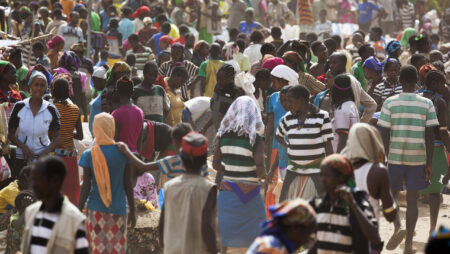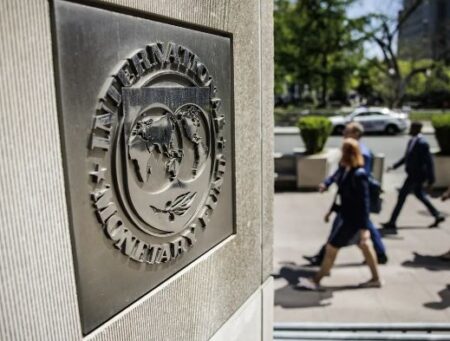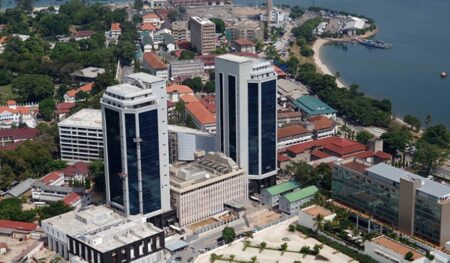- Weaker currencies make the fight to tackle inflation harder given Africa’s dependence on imports.
- According to the IMF, the average depreciation for the region since January 2022 is about eight percent, but events vary by country.
- Ghana’s cedi and Sierra Leone’s leone depreciated by over 45 percent. An analysis by The Exchange Africa shows the Kenya shilling has shed about 18.4 per cent since May last year.
Most African currencies have weakened against the US dollar, fanning inflationary pressures across the continent as import prices surge, IMF now says. This, together with a growth slowdown, leaves policymakers with difficult choices as they balance keeping inflation in check with a fragile recovery.
According to the IMF, the average depreciation across Africa since January 2022 is about eight percent though events vary by country. Ghana’s cedi and Sierra Leone’s leone depreciated by more than 45 per cent.
An analysis by The Exchange Africa shows the Kenya shilling has shed about 18.4 percent since May last year. Year-to-date, it has weakened by about 7.2 percent, based on the average exchange rates. The depreciation across the region were mostly driven by external factors.
Lower risk appetite in global markets and interest rate hikes in the United States pushed investors away from the region towards safer and higher paying US treasury bonds. US central bank has raised interest rates to the highest level in 16 years as it seeks to stabilise prices.
Forex earnings taking a hit
Foreign exchange earnings took a hit in many countries as demand for the region’s exports dropped because of the economic slowdown in major economies. At the same time, high oil and food prices, partly due to Russia’s war in Ukraine, pushed up import costs last year, going into this year, a trend that is still being witnessed.
Large budget deficits have compounded the effects of these external shocks by increasing the demand for foreign exchange, IMF notes. About half of the countries in the region had deficits exceeding five percent of GDP in 2022, putting pressure on their exchange rates.
When currencies weaken against the US dollar, local prices rise, as much of what people buy, including essential items like food, are imported. More than two-thirds of imports are priced in US dollars for most countries in the region.
A one percentage point increase in the rate of depreciation against the US dollar leads, on average, to an increase in inflation of 0.22 percentage points within the first year in the region.
Read also: Ghana maintains key interest rate at 29.5% to tackle inflation
There is also evidence that inflationary pressures do not come down quickly when local currencies strengthen against the US dollar.
Weaker currencies also push up public debt. About 40 percent of public debt is external in sub-Saharan Africa. Additionally over 60 percent of that debt is in US dollars for most countries.
Since the beginning of the pandemic, exchange rate depreciations have contributed to the region’s rise in public debt. On average, countries experienced about 10 percentage points rise in public debt to GDP by end-2022.
Central Banks turning to forex reserves
Growth and inflation, which reduces the real value of existing debts, helped to contain the public debt increase to about six per cent during the same period.
“Many central banks in the region have tried to prop up their currencies by supplying foreign exchange to importers from their reserves. But with reserve buffers running low in many countries, there is little room to continue intervening in foreign exchange markets,” IMF said in a report.
Countries have also applied administrative measures such as foreign exchange rationing or banning foreign currency transactions. These measures can be highly distortive and create opportunities for corruption, the global lender warned.
Given that the external shocks are expected to persist, countries where exchange rates are not pegged (fixed) to a currency have little choice but to let the exchange rate adjust and tighten monetary policy to fight inflation. Countries with pegged exchange rates will need to adjust monetary policy in line with the country of the peg.
“In both country groups, fiscal consolidation can help to rein in external imbalances and limit the increase in debt related to currency depreciation. Structural reforms can help to boost growth,” IMF advices.
Meanwhile, persistent global inflation and tighter monetary policies have led to higher borrowing costs for sub-Saharan African countries and have placed greater pressure on exchange rates.
Eurobond market drought
Indeed, no country has been able to issue a Eurobond since spring 2022. Consequently, the interest burden on public debt is rising owing to a greater reliance on expensive market-based funding. This is compounded by a long-term decline in aid budgets.
Analysts at IMF note that lack of financing affects a region that is already struggling with elevated macroeconomic imbalances. Public debt and inflation are at levels not seen in decades. Already, double-digit inflation is present in about half of the countries. And this is eroding household purchasing power and striking at the most vulnerable.
Read also: China’s crucial role in Africa’s external debt restructuring arrangements
In this context, the economic recovery has been interrupted. Growth in sub-Saharan Africa will decline to 3.6 percent this year, IMF projects.
Amid a global slowdown, activity is expected to decelerate for a second year in a row. Still, this headline figure masks significant variation across the region. The funding squeeze is also expected to impact the region’s longer-term outlook.
A shortage of funding may force countries to reduce resources for critical development. Some of the sectors likely to suffer are health, education, and infrastructure. Overall, this will weaken the region’s growth potential, experts have noted.
Growth in sub-Saharan Africa (SSA) is however expected to rebound to 4.2 percent in 2024, in line with a global recovery, subsiding inflation, and a winding down in monetary policy tightening, according to the latest IMF regional economic outlook for sub-Saharan Africa.
This will be the second consecutive year that SSA records a lower rate of growth than the previous year.
High inflation eroding purchasing power
“Growth across the region varies from country to country. Some countries, particularly those in the East African Community, or non-oil resource intensive countries, are expected to fare better. But some major economies bring down the average SSA growth rate, like South Africa where growth is projected to decelerate sharply to only 0.1 per cent in 2023,” said Abebe Aemro Selassie, Director of the IMF’s African Department.
Public debt and inflation are at levels not seen in decades, with double-digit inflation present in half of countries. This is eroding household purchasing power and striking at the most vulnerable. The rapid tightening of global monetary policy has raised borrowing costs for SSA countries both on domestic and international markets.
All sub-Saharan African frontier markets have been cut off from market access since spring 2022. The strong US dollar however remains a headache. With shrinking aid budgets and reduced inflows from partners, this is leading to a big funding squeeze for the region.
“People in sub-Saharan Africa are feeling the effects of a funding crisis. Since Russia’s invasion of Ukraine, cost of living is more expensive. Borrowing costs have increased and access to cheaper funding is dwindling,” said Mr. Selassie.
“Coupled with a long-term decline in aid and a more recent fall in investment from partners, this means that there is less money to be spent on vital services like health, education, and infrastructure. If measures are not taken, this funding squeeze will hamper Sub-Saharan’s efforts to build a skilled and educated population and to be the driving force of the global economy in years to come,” he added.
Sub-Saharan Africa is far from powerless
The IMF has however affirmed its commitment to support its members. Between 2020 and 2022, it provided more than $50 billion through programs, emergency financing and Special Drawing Rights allocation.
In just two years, the IMF provided more than twice the amount disbursed in any 10-year period since the 1990s.
To address macroeconomic imbalances, Mr Selassie pointed to four priorities. “First, it is important to consolidate public finances and strengthen public financial management amid difficult funding conditions.
This will rely on continued revenue mobilisation, better management of fiscal risks, and more proactive debt management. For countries that require debt reprofiling or restructuring, a well-functioning debt-resolution framework is vital to creating fiscal space.
Second, containing inflation. Monetary policy should be steered cautiously until inflation assumes a downward trajectory. Further steering is needed should be projected towards the central bank’s target range, he said.
Third, economies need to allow the exchange rate to adjust, while mitigating the adverse effects on the economy, including the rise in inflation and debt due to currency depreciations.
And finally, ensuring that important efforts to tackle climate change do not crowd out basic needs, like health and education.
“Climate finance provided by the international community must come on top of current aid flows,” Mr Selassie said.





